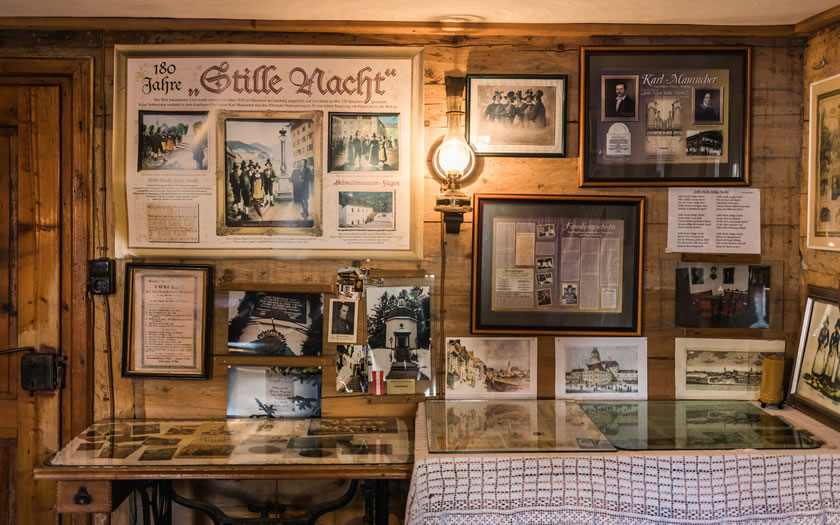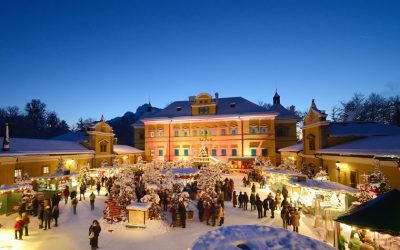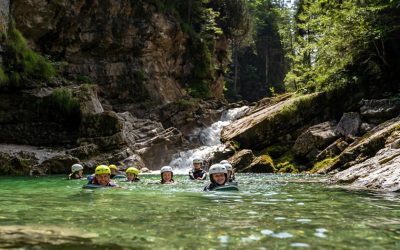The popularity of ‘Silent Night’ as a Christmas carol spread around the world in the 19th century from its origins in the villages of Austria. We take a closer look at the people and places in Upper Austria, Salzburg and the Tyrol who were behind the song, the music and the rise in popularity.
Who Wrote ‘Silent Night’?
The lyrics to ‘Silent Night’ were written by a young Austrian assistant priest, Father Joseph Mohr, who had come to the town of Oberndorf in Salzburg. He had written the lyrics in his first posting in the Lungau town of Mariapfarr but had been forced to leave the mountain settlement because of ill-health.
In Oberndorf he became friends with teacher Franz Gruber, who was to put the music to the words that he had written. Gruber and Mohr remained lifelong friends, although Mohr left Oberndorf for other church postings a year after ‘Silent Night’ had been composed.
Joseph Mohr moved around various postings until he became the priest of Wagrain in 1837. He was instrumental in building the first village school and helped set up a fund so that the children of poorer families could receive education. Father Mohr died at the age of 55 from respiratory problems and is buried in the cemetery near the Joseph Mohr school in Wagrain.
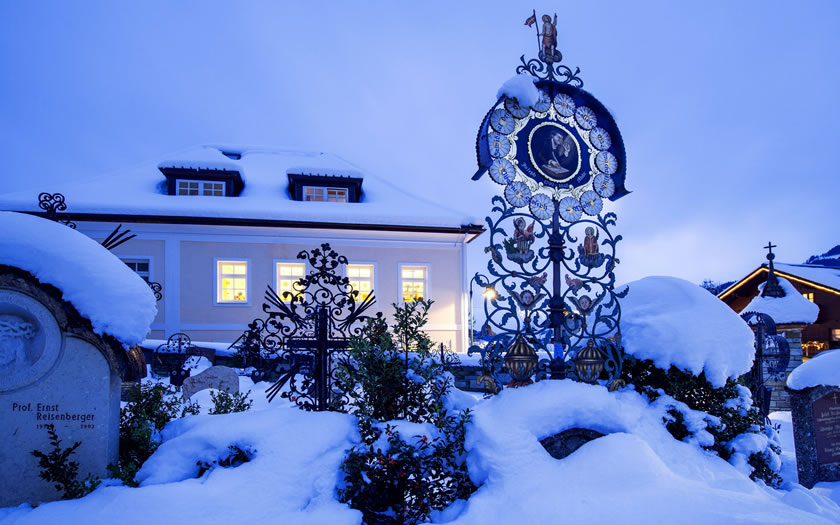
© Salzburger Land Tourismus | Kathrin Gollackner
Who Wrote the Music to ‘Silent Night’?
Teacher Franz Gruber wrote the melody which accompanied Joseph Mohr’s lyrics. Gruber was originally a weaver from the town of Hochburg-Ach in the Innviertel region of Upper Austria but his musical abilities led to him following a teaching career.
His first position as a teacher was as an assistant in his home town before he moved to Arnsdorf in the province of Salzburg. He was also the organist and choirmaster for the St Nikola church in Oberndorf, which is where he met Father Mohr.
He later moved to the larger town of Hallein, also in Salzburg, where he became choirmaster and organist, and could concentrate more on his music. Franz Gruber died in 1863 of old age and is buried in Hallein.
A Gruber Memorial House can be visited in his home town of Hochburg-Ach. The original building where he grew up was destroyed in the 1920s but a similar wooden building from that era was transported from a neighbouring hamlet and rebuilt. There is also a Franz Gruber Peace Trail with sculptures and quotes from Gruber’s life and the story of ‘Slient Night’.
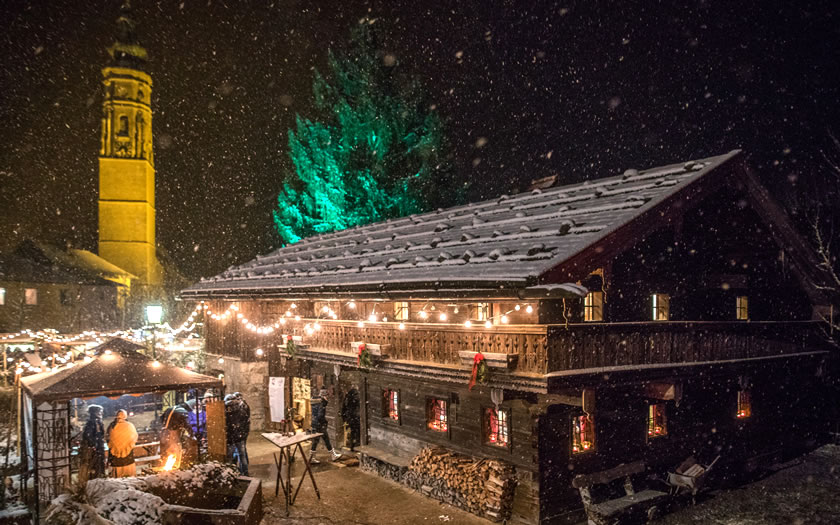
© Stille Nacht | Oberösterreich Tourismus
When was ‘Silent Night’ First Performed?
The ‘Silent Night’ Christmas carol was first performed in the church of St Nikola in Oberndorf on Christmas Eve of 1818. Both Father Joseph Mohr, who had written the lyrics, and Franz Gruber, who had set them to music, performed the song in front of a traditional nativity scene.
It was Joseph Mohr, who was a keen guitarist, who actually accompanied the song on guitar. For many years it was thought that this was because the organ had broken down but now historians believe that the guitar was the original accompaniment and the arrangement for organ was written later.
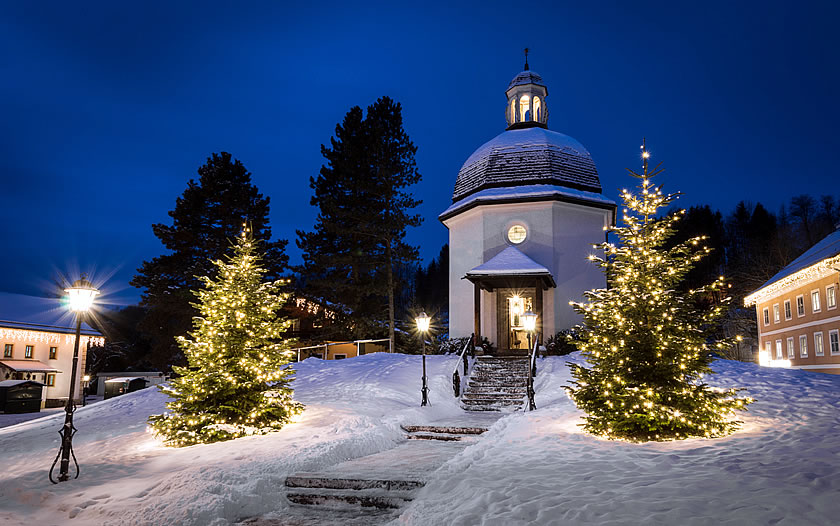
© TVB Oberndorf
Why Did ‘Silent Night’ Become So Popular?
How did a song become popular back in the 19th century? One important avenue was the popularity of singing ensembles like the Strasser family from the Ziller valley.
Their “manager” was the father Lorenz Strasser, a farmer and merchant. Dressed in traditional Tyrolean costumes, he, his three daughters and his son travelled to markets in Germany. The father sold his goods while the children sang Tyrolean songs – and also “Silent Night”. After the family had sung “Silent Night” for the first time at the Leipzig Christmas market in 1831, many more performances followed. Choirs and ensembles from Germany included the song in their repertoire.
The Strasser House museum in the village of Hippach in the Tyrol tells the story of the Strasser family’s life in the former residence, which is a listed building. Original notes, pictures of family members, items of clothing and agricultural implements of the time can be seen in the wooden house with smoke-blackened beams, . The “Strasser-Häusl” is best reached on foot. The one and a half kilometre long hiking trail starts below the church of Hippach and leads along the river Ziller to the museum.
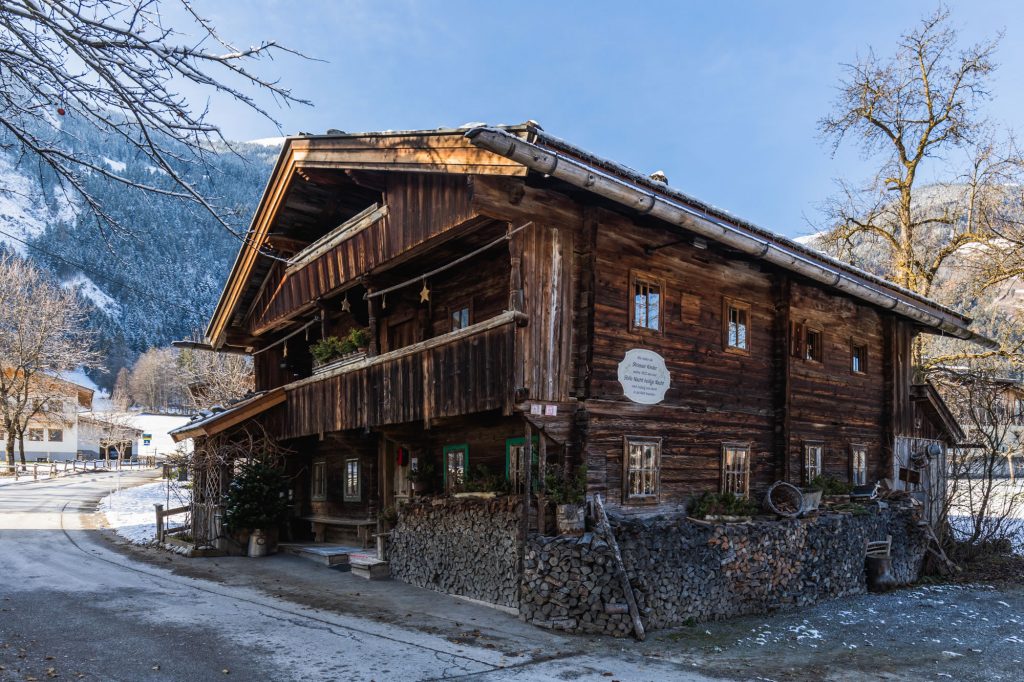
© Stille Nacht | Tirol Werbung | Michael Grössinger
More information: www.stillenacht.com

